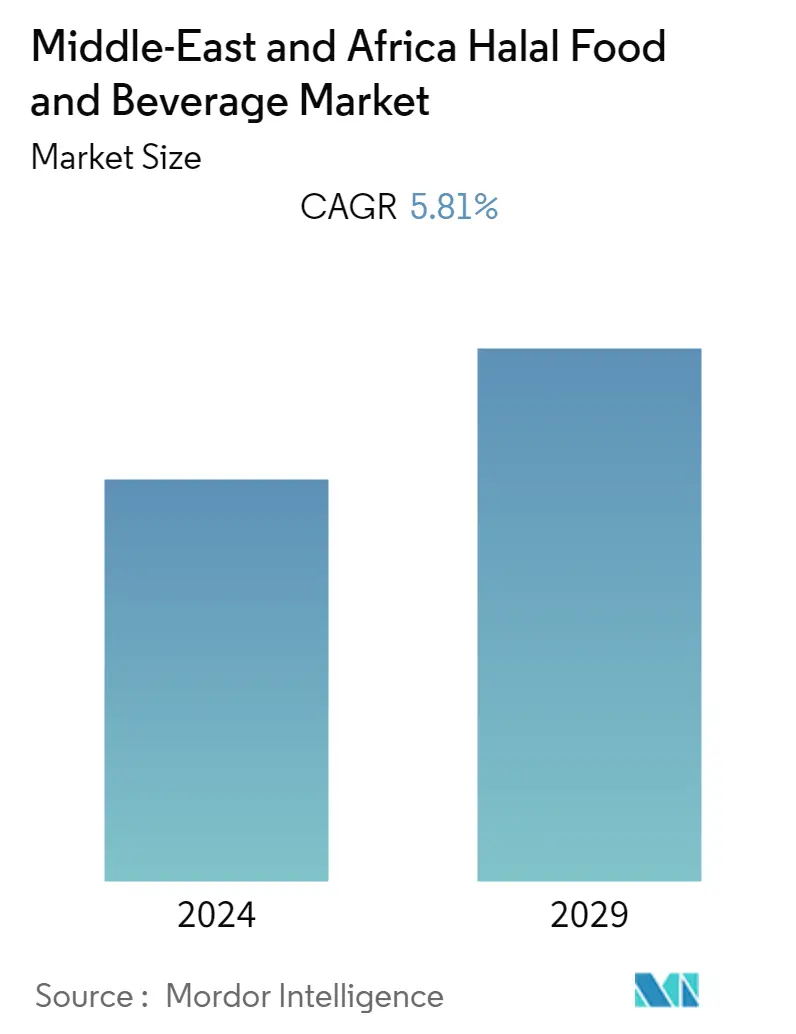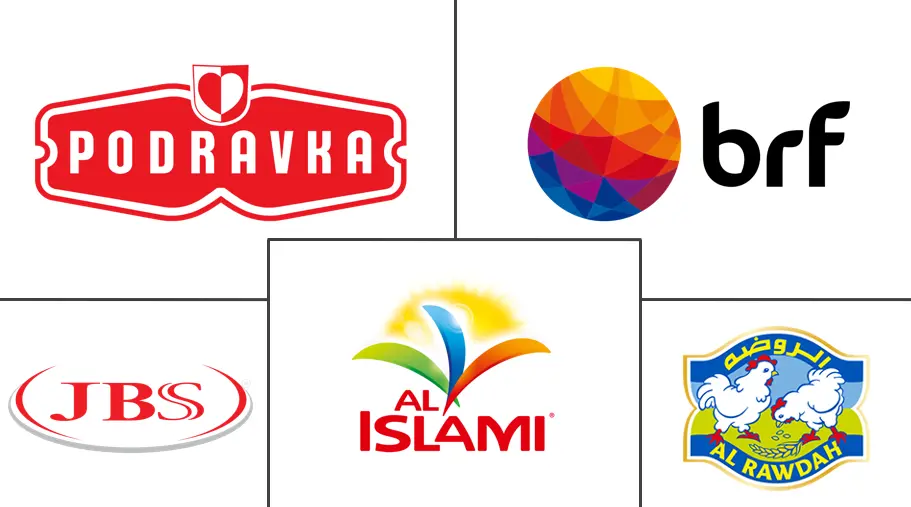Market Size of Middle-East and Africa Halal Food and Beverage Industry

| Study Period | 2019 - 2029 |
| Base Year For Estimation | 2023 |
| Forecast Data Period | 2024 - 2029 |
| Historical Data Period | 2019 - 2022 |
| CAGR | 5.81 % |
| Market Concentration | Low |
Major Players
*Disclaimer: Major Players sorted in no particular order |
Need a report that reflects how COVID-19 has impacted this market and its growth?
MEA Halal Food & Beverage Market Analysis
The Middle-East and Africa halal food and beverage market is projected to witness a CAGR of 5.81%, during the forecast period (2021-2026).
The unprecedented outbreak of the COVID-19 pandemic has not only been a tragic health issue globally but has severely impacted the global economy on account of restrictions set by the government. However, despite its massive impact on the industries worldwide, the challenges posed to the Halal food industry in the middle-east and Africa region have not been significant enough, owing to the ever-increasing demand for halal food & beverage products majorly across countries like Saudi Arabia, United Arab Emirates, Kuwait, Egypt, and Bahrain, among others. Also, Ramadan was a period amidst the pandemic, which accelerated the sales of halal products in the region. Additionally, consumers shifted to home cooking, and online shopping for their daily essentials. The Saudi supermarket BinDaWood Holding reported their e-commerce sales increased by 200%, according to the World Halal Authority. With manufacturing, production, and logistical operations being disrupted, key exporters have had a challenging year financially, but, an increase in e-commerce, increased the demand for food security initiatives, and more clear labelling of healthier foods including halal products in the region.
Over the medium term, the growing awareness of halal food and its positioning as hygienic and healthy food among, both, Muslim and non-Muslim communities, has resulted in an increase in the consumption and acceptance of halal food, which is expected to drive the demand over the forecast period. Furthermore, the assurance of integrity throughout the Halal supply chain has become a major concern for Muslim consumers, with fraudulent Halal certification and physical contamination of food products on the rise. Hence, supply chain integrity needs to be protected right from the point of animal slaughter and including transportation, storage, to the handling of Halal products.
